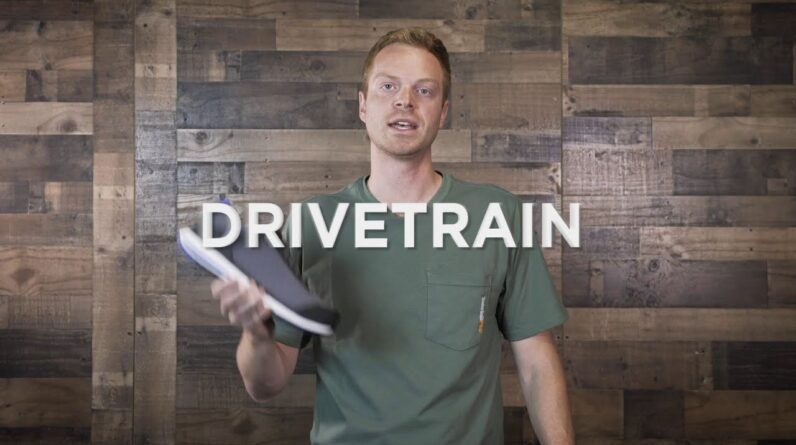
This post may contain affiliate links which means I may receive a commission for purchases made through links. Learn more on my Private Policy page.
Introduction: YouTube as a Source of Information
In today’s digital age, YouTube has grown to become a primary source of information and entertainment, reaching millions of users worldwide daily. As an open platform, YouTube allows content creators and information publishers to share their videos and engage with audiences through captivating audiovisual experiences. This article will analyze a YouTube video script to provide readers with a comprehensive understanding of the content and value offered by this digital medium.
About The Video: React Paging with Light Bootstrap Dashboard
The video in question is titled ‘React Paging with Light Bootstrap Dashboard’; it is a tutorial that aims to teach users how to manage data pagination in a React-based web application using a Light Bootstrap Dashboard.
Target Audience
This tutorial is targeted at developers who have a basic knowledge of web development technologies and JavaScript programming, familiar with using React and have experience or have undergone tutorials introducing them to Light Bootstrap Dashboard, which is a popular CSS Framework, as well as JavaScript libraries such as Axios.
Importance of Pagination
Looking at various web applications, it is evident that data management and representation are crucial components. As data grows in size, it becomes increasingly challenging to display it all on a single page. This is where the concept of pagination comes into play. Pagination allows presenting large amounts of data in a more user-friendly way by breaking it down into smaller chunks, making it easier to process and view. This technique is commonly used for tables in web applications to show paginated information to users.
Setting up the Environment
Before diving into the React Pagination tutorial, it is essential to ensure that your working environment is properly set up and configured. This section will guide you through the initial setup steps required to start implementing pagination in the Light Bootstrap Dashboard.
1. Install Node.js
To begin, make sure that Node.js is installed on your computer. Node.js is an open-source runtime environment that allows JavaScript code to run on your computer. You can download the latest version from the official Node.js website. During installation, it is advisable to choose the LTS (Long Term Support) version. After completing the installation, confirm Node.js is correctly installed by running the following command in your command prompt:
“`bash
node -v
“`
This command will return the current version of Node.js installed on your computer.
2. Set up the Project Directory
With Node.js in place, create a new project directory, and navigate to it using the command prompt. Once you are inside the directory, initialize a new Node.js project:
“`bash
npm init
“`
This command will prompt you to provide basic information about your project, resulting in the creation of a “package.json” file. It is a crucial file, as it describes your project and its dependencies.
3. Install needed Dependencies and Libraries
To create the React application, you will require the following libraries:
1. Create React App:
“`bash
npx create-react-app my-app
“`
2. Light Bootstrap Dashboard React:
“`bash
npm install light-bootstrap-dashboard-react
“`
3. Axios, for handling HTTP requests:
“`bash
npm install axios
“`
Installing these libraries ensures that your environment is configured correctly for building React-based pagination applications.
Implementing Pagination in Light Bootstrap Dashboard
Having set up the environment, you can now begin implementing pagination in the React application using Light Bootstrap Dashboard.
Creating the Pagination Component
1. Start by creating a new directory called “components” inside your project’s “src” directory.
2. Inside the components directory, create a new file named “Pagination.js”. This file will contain the React component for handling pagination.
“`javascript
import React from ‘react’;
class Pagination extends React.Component {
constructor() {
super();
}
render() {
// define pagination rendering logic here
}
}
export default Pagination;
“`
With the basic structure for the Pagination component in place, proceed to enhance the component to handle the different pagination scenarios.
Implementing Pagination Rendering Logic
The Pagination component should render various elements based on different scenarios:
– Display the previous page link if not on the first page
– Display links for specific pages
– Display the next page link if not on the last page
To achieve this, update the render() method in the Pagination.js file accordingly.
“`javascript
render() {
const { currentPage, totalPages } = this.props;
return (
);
}
“`
In the render() method, the component receives the current page and the total number of pages as properties. It then generates the appropriate pagination elements and corresponding navigation actions.
Displaying the Pagination Component
To display the Pagination component in your React application, import it into your main application file (usually App.js or index.js). Pass in the required properties (currentPage and totalPages) and actions (previousPage, nextPage, changePage) to the Pagination component.
“`javascript
import React, { Component } from ‘react’;
import Pagination from ‘./components/Pagination’;
class App extends Component {
constructor() {
super();
this.state = {
currentPage: 1,
totalPages: 10
};
}
// Define the functions for handling pagination actions here
render() {
return (
);
}
}
export default App;
“`
With this, the Pagination component is displayed and functional in your React application, allowing users to navigate through large sets of data efficiently.
Conclusion
Mastering pagination in web applications has become an essential skill for developers seeking to create seamless, user-friendly experiences online. Platforms like YouTube facilitate knowledge-sharing, making it easier for individuals to learn the ropes of React Pagination with frameworks like Light Bootstrap Dashboard.







